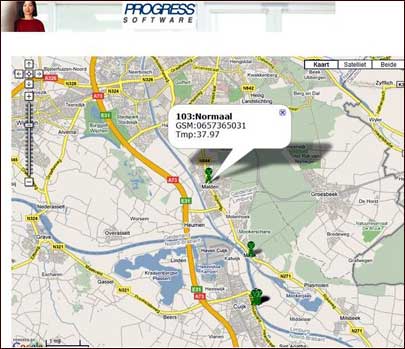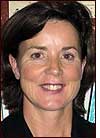Each year on July 3, while Americans prepare for Independence Day festivities, tens of thousands of Dutch citizens set out on a four-day hike through the Netherlands as part of an event known as Four Day Marches Nijmegen. Founded in 1909 as a means of keeping members of the Dutch military physically fit, the event now attracts around 45,000 participants, who walk 30 to 50 kilometers (about 19 to 31 miles) daily for four consecutive days. The 2006 event, however, was cut short after unusually high temperatures led to the deaths of two walkers, while many others fell ill.
In the wake of that tragedy, race organizers began seeking a way to remind walkers to remain properly hydrated and avoid overheating during the event. So in 2007, Maria Hopman, a professor heading the integrative physiology research group at Radboud University in Nijmegen, led an experiment in which a subset of walkers volunteered to swallow a pill containing a battery-powered RFID tag and temperature sensor. At checkpoints along the walking route, Dr. Hopman’s research team used a handheld RFID reader to receive the 262 kHz signal transmitted by each RFID tag, which provided a reading of a volunteer’s body temperature. Medical personnel would then record the person’s temperature, as well as other vital signs, and gauge the level of health.

But for this year’s race, Hopman and members of her department worked with representatives with Progress Software, a provider of application software designed for a range of business applications, to devise a means of collecting tag data in real time. The goal, she explains, was to be able to provide the medical staff insights into participants’ conditions so they could take preventative measures to ensure the volunteers’ health throughout the event, rather than waiting until those individuals reached a checkpoint, or reacting once they were already ailing.
Radboud researchers worked with Progress Software to utilize its Apama Event Processing software to create a means of monitoring, in real time, the health of Four Day Marches walkers. The Apama software is based on complex-event processing technology, which takes disparate data streams and analyzes them for a specific, often predictive purpose. (In 2005, Progress purchased the software’s developer, a company named Apama, intending to pair the software with RFID-based data collection. See ObjectStore Adding Event-Driven Tools.)
Florida firm HQ Inc. manufactured the ingestible RFID pill and the handheld reader used during the 2007 and 2008 tests. The oval-shaped RFID transponder pill measures roughly 1 centimeter (0.4 inch) in length and half a centimeter (0.2 inch) in width, says Martijn Bakkers, branch manager of health-care at Progress Software’s Rotterdam office. Its battery lasts up to three days, Bakkers notes, but the pill passes through most people’s digestive tract within one or two days. Once ingested, he adds, the tag has a read range of up to 300 feet, but that range was reduced to 30 centimeters (11.8 inches) for the 2008 tests, because that long range was not required for the project.
At this year’s Four Day Marches, 110 participants took part in the RFID project. They each ingested a pill at the beginning of the event, then met every morning with the medical staff, who attempted to read the tag’s signal. If no signal was found, a new pill was given to swallow, with the assumption that the previous one had passed.
Progress Software created software that was loaded onto GPS-enabled mobile phones provided by KPN, a Netherlands-based telecommunications provider. Ten of the 110 walkers who took the RFID-enabled pill carried these phones, along with handheld HQ RFID readers, in backpacks throughout the event. Every five seconds, a participant’s RFID pill would transmit a signal, and the reader in that person’s pack would capture the data encoded to that signal and forward it, via Bluetooth, to the software running on the mobile phone. The phone then relayed the information to the Progress Apama software, which the researchers monitored from a central location.
Each HQ tag, Bakkers says, transmits a unique identification number, as well as the body temperature. This data was encrypted to protect the volunteer’s privacy, and the Apama software decrypted it upon receiving it via the cellular link. The decrypted data showed researchers the participant’s name (based on the ID), temperature and location.
The researchers were able to view a map of the course on which an icon represented each of the 10 volunteers. A green icon indicated a normal temperature range, while any that turned red would have denoted dangerously high temps. Although none of the 10 volunteers came close to overheating during this year’s event (the weather was mild), the system was set up to transmit a text alert to the phone of any participant who became dangerously hot.
The remaining 100 walkers stopped at designated rest points, where medical personnel used the same type of HQ handheld reader to take manual readings of the tags. According to Bakkers, the temperature sensor is highly accurate—it even rose by half a degree Celsius when participants wore raincoats during part of the event.
To determine a volunteer’s health, the Apama software correlated the body temperature with that person’s height, weight and other personal statistics. But it could also factor in additional metrics, such as the body temperatures of walkers who were, say, further ahead on the course. This could prove useful for future events if, for instance, the core temperature of a greater number of phone-carrying event participants were to be monitored remotely and in real time. If the data showed a number of monitored participants exhibiting dangerously high temperatures, Bakkers explains, the software could issue the text messages to walkers farther back in the field, advising them to drink more fluids or shed layers of clothing.
The high cost of the handheld RFID reader and mobile phone, Bakkers says, limited the quantity used during this year’s event. HQ, he notes, is currently developing a version of the reader that will include a GPRS and GPS module that will transit tag and sensor data, along with location, to back-end software. The device will also be about half the size of a conventional cellular phone, which Bakkers believes will make it small enough to be comfortably carried by elite marathoners, cyclists or other athletes whose health coaches want to be able to remotely monitor during events.
Professional and collegiate football teams currently utilize HQ pills and readers during summer workouts to keep an eye on players susceptible to heatstroke—a condition that has claimed the lives of athletes in the past. Remotely monitoring the health and location of athletes using RFID combined with GPS data is a big diversion from the supply chain applications for which Progress Software has utilized its complex-event processing software in the past, but Bakkers says the company sees a good market opportunity in the application.
“All the technology in our portfolio at the moment is suitable for these applications,” Bakkers states. “It does not matter where the events occur—the software is great at analyzing events and creating predictions based on the data.”


